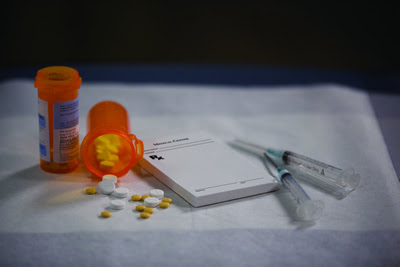
CDC Injury Center wants to share two new research articles related to the effect of policy changes on prescription and illicit opioid abuse. Study findings indicate promising practices for combatting the opioid overdose epidemic for federal, state and local partners.
Effect of Policy and Program Change on Illicit Use
Efforts to curb inappropriate opioid prescribing do not seem to be associated increased in heroin use.
According to national surveillance, heroin use increased by 83% from 2007-2013, and overdose deaths involving heroin more than quadrupled from 2000-2013. Heroin is similar to prescription opioids, and overdose deaths involving prescription opioids have also increased significantly in the last decade.
Research findings co-authored by the Centers for Disease Control and Prevention Injury Center in theNew England Journal of Medicine suggest underlying factors related to the increase in heroin use. The journal article “Understanding the Relationship between Opioid and Heroin Abuse” concludes that efforts to curb inappropriate prescribing do not seem to be associated with increased heroin use. Main research findings indicate:
- Increases in heroin overdose death rates were associated with increases in prescription opioid overdose death rates in several states.
- The transition from prescription opioid non-medical use to heroin use appears to be part of the progression of addiction in a subset of opioid users.
- Increased heroin use occurred before policies targeting prescription opioid abuse were implemented.
- Increased availability, low cost, and high purity of heroin are often cited by users as driving increased heroin use.
To reduce prescription opioid and heroin-related overdose, death and dependence we should:
- Provide training and educational resources to health professionals to assist providers in making informed prescribing decisions and address inappropriate use of opioids,
- Increase access and use of naloxone, and
- Expand use of medication-assisted treatment (MAT) such as buprenorphine, methadone, and naltrexone in combination with counseling and other behavioral therapies to treat substance use disorders.
Pill Mill Law Decreases Opioid Prescribing in Texas
One of the first rigorous analyses regarding the effect of “pill mill” legislation that indicates that implementation of such laws are associated with decreases in opioid prescribing and use.
Most people who misuse prescription opioid pain relievers obtain them from licensed prescribers or from family members or friends who obtain them from licensed prescribers. Some users receive prescriptions from “pill mills”, or pain management clinics whose providers prescribe large quantities of opioids and other controlled substances with little patient monitoring.
Historically, Texas has been among the four states in the U.S. with the highest concentration of “pill mills.” In September 2010, Texas implemented laws to improve the oversight of “pill mills” through several clinic and owner requirements.
Researchers from Johns Hopkins and the CDC considered the effect on opioid prescribing and use in the year following implementation of the law. Study findings, published in Drug and Alcohol Dependence as “Effect of a Pill Mill Law on Opioid Prescribing and Utilization: The Case of Texas”, indicate that:
- Average opioid dose, total volume, number of prescriptions, and quantity of pills dispensed decreased significantly.
- Decreases were greatest among providers and patients with the highest amounts of prescribing and use before the legislation was passed.
- The amount of opioids taken out of circulation is estimated to equal a continuous one week’s supply of Vicodin for every 45 – 49 year old in Texas.
Learn More
For more information on the research articles featured in this announcement or for information on prescription drug overdose visit:
- Drug and Alcohol Dependence: Effect of a Pill Mill Law on Opioid Prescribing and Utilization: The Case of Texas
- New England Journal of Medicine: Relationship between Nonmedical Prescription-Opioid Use and Heroin Use
- NIH National Association on Drug Abuse News Release
- Effect of a Pill Mill Law on Opioid Prescribing and Utilization article
- CDC Drug Overdose website
- Information on Prescription Drug Monitoring Programs
- CDC Vital Signs – Today’s Heroin Epidemic






















.png)











No hay comentarios:
Publicar un comentario